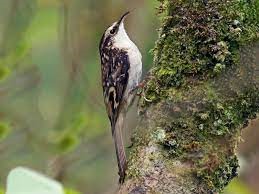Oak trees are the pride of the English countryside – from the tales of old that say oak trees are the door to other worlds, they are also loved for their strength and endurance (the ancient druid word for oak is Duir, which is where durable comes from!) They have been long used for building from hundreds of years ago and even nowadays oak framed extensions like these https://www.timberpride.co.uk/timber-oak-framed-extension/ are as popular as ever.
Oak trees are also loved by wildlife and many of our native birds in particular rely on the oak tree. The autumn is a great time to go birdwatching in an oak woodland as there is the possibility to see a lot of birds and other wildlife as the leaves start to fall. Here are a few to look out for…
The Jay is particularly reliant on the oak tree so you will often spot them at this time of the year – in fact, the birds Latin name – Garrulus Glandarius actually comes from the Latin Glandarius meaning of the acorn! Garrulus means very talkative and like other corvids they are known for their loud voices and their ability to be able to mimic human voices. Because acorns are abundant in the autumn, this is a really good time of year to spot a Jay. They are very distinguishable and hard to miss, as unlike their relatives the crows, the sport a much more colourful plumage.

Treecreeper – These tiny birds often will only stick to one particular tree that they call their home. Oak trees are a particular favourite as they are large and their bark is a home for many insects like earwigs, which is what these birds feed on. Although they are quite common because of the tiny size and the fact that they blend in well with the bark they are not always easy to spot. If you remain in a place in a quiet area of the woodland look out for their vertical movements up and down the tree trunks.

Wood Warbler – These beautiful yellowy green birds are not only attractive to look at but are well known for having a lovely singing voice! If you want to spot them then catch them before they migrate to Africa for the winter as they leave the UK in later August to early September and will not be back until around April. They favour mature oak trees where they can feast on the insects in the canopy of leaves. Their distinct song is probably the first thing that you will notice before spotting them, and it is often likened to a coin being spun on top of a table. Sadly, they are on the red list meaning that they are a conservation concern, so it is another sign that we must protect our oak woodlands to ensure that these birds always have a place to call home.










